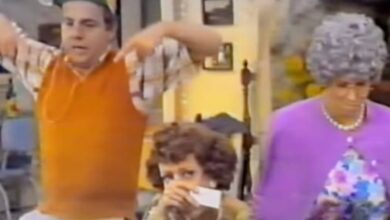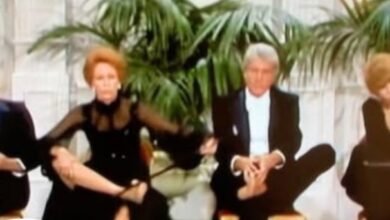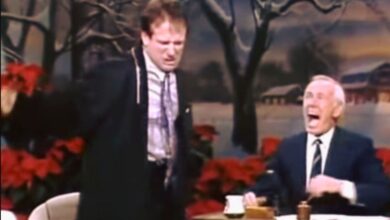Roger Miller’s “King of the Road” Redefined Country Cool and Took Over the Charts in 1965
In early 1965, a laid-back, finger-snapping melody drifted from radios across America and instantly caught the attention of listeners from all walks of life. “King of the Road,” written and performed by Roger Miller, was a masterclass in minimalist storytelling that defied traditional country norms. With its tongue-in-cheek lyrics about the romanticized life of a hobo, the song struck a rare chord that resonated far beyond Nashville. It climbed to No. 1 on the Billboard Country chart, cracked the Top 5 on the Hot 100, and even found its way onto the Easy Listening and UK Singles charts. In a year defined by rock and Motown, Miller’s quirky anthem carved out its own lane—becoming one of the most recognizable and genre-transcending hits of the 1960s.
Roger Miller had already been making a name for himself as a songwriter before his performing career took off. Born in Fort Worth, Texas, and raised in Oklahoma, he grew up in modest circumstances and spent much of his youth working odd jobs and listening to country radio. After a stint in the Army, Miller pursued music full time, penning songs for artists like Jim Reeves and Ray Price. What set him apart from his contemporaries was his blend of country lyricism with wit, humor, and a jazz-influenced rhythm. He could tell a story with the ease of a folk balladeer but always with a smirk and a turn of phrase that felt refreshingly modern.
“King of the Road” was born out of Miller’s observations of the world around him. Legend has it that he was inspired by a roadside sign advertising rooms for rent—something about it struck a chord. That kernel of inspiration grew into a song that painted a vivid portrait of a carefree vagabond who, despite owning little, claims a sense of freedom that wealth can’t buy. The lyrics cleverly contrast poverty and pride: “Trailers for sale or rent / Rooms to let, fifty cents.” It wasn’t just a song—it was a whole worldview packed into two and a half minutes, offering both comedy and quiet rebellion.
The recording process behind “King of the Road” was remarkably understated. The track was produced by Jerry Kennedy, with a stripped-down arrangement that featured snapping fingers, a stand-up bass, acoustic guitar, and Miller’s distinctive voice. He delivered the song with a half-spoken, half-sung cadence that felt like a personal conversation with the listener. There was no grand orchestration, no dramatic crescendos—just effortless cool. The song’s deliberate simplicity allowed the lyrics to shine, making every clever twist and rhythmic pause hit just right.
Upon release, “King of the Road” was an instant smash. It topped the country charts for five weeks and made a formidable crossover to the pop world, peaking at No. 4 on the Billboard Hot 100. It also claimed the No. 1 spot on the Easy Listening chart and climbed to No. 1 in the UK—a rare feat for a country song at the time. The song earned Roger Miller five Grammy Awards in 1966, including Best Country Song and Best Male Country Vocal Performance. Its universal charm and melodic accessibility made it one of the year’s most celebrated tracks.
Culturally, “King of the Road” shifted perceptions of what country music could be. It appealed to urbanites and folk enthusiasts, to blue-collar workers and college students alike. At a time when country music often emphasized domesticity or heartbreak, Miller’s track offered a breezy alternative—one that embraced individuality, satire, and existential freedom. It was humorous without being hokey, and poetic without taking itself too seriously. In many ways, it opened the door for a more sophisticated kind of country songwriting.
For Miller himself, the success of “King of the Road” catapulted him into superstardom. He became a household name almost overnight and was soon appearing on national TV shows, including “The Ed Sullivan Show” and “The Tonight Show.” The song’s success allowed him to tour internationally, bringing his blend of country, jazz, and comedic flair to audiences far beyond the American South. It also solidified his place as a unique voice in an increasingly crowded music landscape.
The song’s impact extended well beyond Miller’s own career. “King of the Road” inspired a new wave of singer-songwriters who saw the value in clever wordplay and unorthodox storytelling. Artists like Kris Kristofferson and John Prine would later cite Miller as an influence, crediting him with making it cool to blend intellect with country roots. His humorous, observational style became a touchstone for artists looking to escape the confines of traditional genre expectations.
Over the years, “King of the Road” has been covered by numerous artists, from Dean Martin to Randy Travis. Each version brings something different—Martin lent it Vegas swing, while Travis returned it to its country roots. Even R.E.M. once performed it live, proof of the song’s unusual ability to transcend generations and genres. Its adaptability is a testament to its core strength: a brilliantly written lyric that speaks to something universal.
Around the time of the song’s release, Miller was experiencing both personal triumph and professional strain. The sudden fame and constant touring schedule took a toll on his health and personal life, yet he continued to write and record with remarkable productivity. The whirlwind surrounding “King of the Road” was both a peak and a pivot—though he never topped that success again, he remained a respected figure in music for decades.
Decades after its release, “King of the Road” continues to hold a firm place in American pop culture. It’s frequently featured in movies, TV shows, and commercials—always evoking a sense of carefree independence. Its chorus is instantly recognizable, and its imagery of boxcars, four-bit rooms, and cigarette butts remains iconic. It was even added to the Grammy Hall of Fame in 1998, further cementing its status as a timeless classic.
More than just a chart-topper, “King of the Road” helped pave the way for the crossover appeal of country music in the mainstream. Its blend of humor, subtle rebellion, and storytelling influenced both production and lyrical trends in the years that followed. It reminded producers and labels that simplicity, when paired with wit and honesty, could outperform even the most polished studio creations.
Roger Miller passed away in 1992, but his legacy has only grown. In 1995, he was posthumously inducted into the Country Music Hall of Fame. His body of work—funny, heartfelt, and always original—continues to inspire artists across genres. But it is “King of the Road” that remains his signature achievement, the crown jewel in a career that bent the rules and broadened the audience for country music.
What makes “King of the Road” so enduring is not just its clever lyrics or unique style, but the way it invites listeners into a different mindset. It’s a song that celebrates the intangible—the freedom to roam, the joy in having nothing, the pride in self-sufficiency. It makes poverty poetic and turns a hobo into a king. That’s not just good songwriting—it’s timeless art.
Even in 2025, sixty years after its release, “King of the Road” still plays like a fresh breeze. Whether heard on an old jukebox, a Spotify playlist, or in the background of a film scene, it continues to charm new generations. It’s a rare song that can make you smile, tap your foot, and think all at once—and in doing so, it confirms Roger Miller’s place in the pantheon of American music legends.





